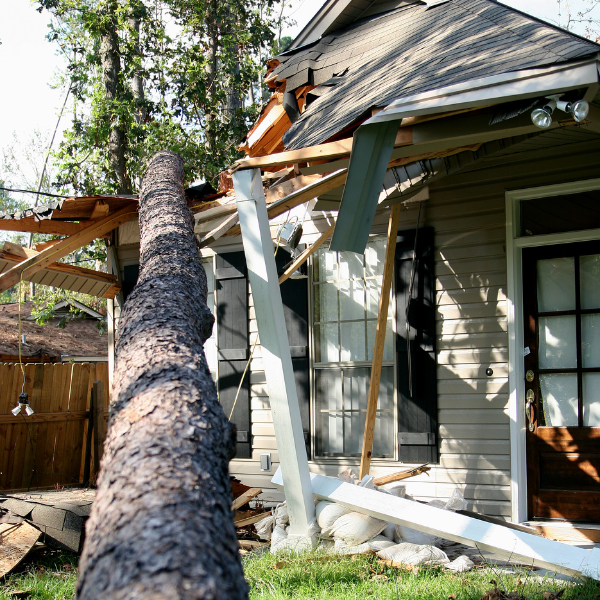Last Updated: February 2024

Although most insurance policies will hopefully never need to be used, it is a good idea to understand the limitations that standard landlord insurance policies have. In situations where claims or lawsuits can exceed the limits of your standard policy, umbrella insurance for a rental property would kick in to ensure that the landlord does not need to pay the difference. With limits on most landlord policies ranging between $100,000 to $1,000,000, it is easy to see that a large insurance claim could eclipse the existing policy, leaving the property owner liable to pay the difference.
On This Page
- What is an Umbrella Insurance Policy for a Rental Property?
- Type of Umbrella Policies for Rental Properties
- What is Covered & Not Covered in an Umbrella Insurance Policy
- Average Cost of an Umbrella Policy for Landlords
- Umbrella Policy Example
- Best Real Estate Umbrella Insurance Policy Providers
- Umbrella Insurance Frequently Asked Questions
What is an Umbrella Insurance Policy for a Rental Property?
An umbrella policy, in the context of rental real estate, is a type of insurance policy that provides liability coverage above and beyond the limits of a landlord’s primary insurance policies, such as homeowners or landlord insurance. This extra layer of protection kicks in when the liability on these other policies has been exhausted. If it were to take effect, it would serve as a safeguard against unusually high loss situations, offering extended coverage for scenarios such as serious property damage, bodily injury, or significant legal expenses related to lawsuits.
Type of Umbrella Policies for Rental Properties
Umbrella insurance policies for rental properties generally fall into two primary categories: Personal Umbrella Policies and Commercial Umbrella Policies:
Personal Umbrella Policies
These are primarily designed to provide extra liability coverage for individuals beyond the limits of their primary insurance policies, such as homeowners, auto, and boat insurance. For landlords who rent out a part of their primary residence or who own a single rental property, a personal umbrella policy might provide sufficient additional coverage.
Commercial Umbrella Policies
These are designed for businesses, including real estate investment entities. If you own multiple rental properties or operate as a real estate business, a commercial umbrella policy might be more appropriate. It can provide additional liability coverage beyond your commercial property or landlord insurance.
What is Covered & Not Covered in an Umbrella Insurance Policy
Understanding the nuances of what is covered (and not covered via exclusions) under an umbrella insurance policy is crucial for landlords seeking additional layers of financial protection. As umbrella policies are meant to provide additional coverage beyond standard policies, the specifics of coverage can vary based on the primary policies in place and the specific terms of the umbrella policy. However, there are generally accepted norms of what umbrella policies do and do not cover.
| Typically Covered | Typically Not Covered |
|---|---|
| Bodily injury liability | Business losses |
| Property damage liability | Intentional or criminal acts |
| Landlord liability | Property damage under normal wear and tear |
| Legal defense costs | Damages from war or nuclear radiation |
| Personal injury claims (slander, libel) | Damage from transmission of diseases |
| Certain lawsuits involving defamation | Rental contract disputes |
| Auto-related liabilities exceeding primary | Damage expected or intended by the insured |
Average Cost of an Umbrella Policy for Landlords
$5931
1Based on $1 Million in coverage for a household with one home, two cars and two drivers ($383) and a 55% premium for assumed ownership of additional rental properties. Source: TrustedChoice.com
We estimate the average cost of an umbrella insurance policy for landlords to be $593 per year. The cost of an umbrella policy can vary significantly based on several factors, including the amount of coverage you desire, the number of properties you own, and property locations. For a $1 million policy, landlords can generally expect to pay around a base of $400, up into several thousand per year depending on how many properties they own. If higher limits are needed, each additional $1 million of coverage can typically be purchased for about $100 to $150.
Umbrella Policy Example

To better understand how an umbrella insurance policy works, let’s visualize an example where a landlord owns a rental property. A severe storm causes extensive damage to the roof of the property, and the repair costs total $150,000. The landlord’s property insurance has a limit of $100,000 for structural damage. In this case, the landlord’s insurance policy would cover the first $100,000, but they would typically be responsible for the remaining $50,000. However, if the landlord has an umbrella insurance policy, it would kick in to cover the remaining balance, thus providing an additional layer of financial protection.
The #1 Rental Property Newsletter
Once a month, we send out an exclusive Rental Property Market Update with top stories, current mortgage rates, building products, and more. No spam and unsubscribe anytime.

Best Real Estate Umbrella Insurance Policy Providers
Umbrella Insurance Frequently Asked Questions
Does an Umbrella Policy Replace the Need for a Landlord Insurance Policy?
No, an umbrella policy does not replace a general landlord insurance policy. An umbrella policy only serves as an extra layer of protection above and beyond the landlord insurance policy. Landlord insurance provides essential coverage for property damage, liability, and loss of rental income, among other things. An umbrella policy only extends existing landlord insurance policy coverage limits, only stepping in once these underlying limits have been exhausted. Just like renters insurance and rent guarantee insurance, these additional policies work together to provide comprehensive protection for your rental property.
Which is Better: Umbrella Insurance Policy vs LLC?
An umbrella policy and forming an LLC each offers unique advantages when it comes to liability protection. Umbrella insurance extends liability coverage beyond the limits of your standard insurance policies, providing an extra layer of financial protection in case of major claims or lawsuits. On the other hand, an LLC is a form of rental real estate ownership that separates personal and business assets, protecting personal assets from being used to settle business debts or legal issues.
How Much Umbrella Insurance Should a Landlord Have?
The amount of umbrella insurance a landlord should have generally depends on the value of their assets, potential risks associated with their rental property, and the extent of liability coverage from their primary insurance policies. A common rule of thumb is to carry at least enough umbrella coverage to equal the total value of one’s assets. However, landlords with multiple properties, or properties in areas with higher risk of lawsuits, may benefit from higher limits.
More Rental Real Estate Insurance
About the Author

Ryan Nelson
I’m an investor, real estate developer, and property manager with hands-on experience in all types of real estate from single family homes up to hundreds of thousands of square feet of commercial real estate. RentalRealEstate is my mission to create the ultimate real estate investor platform for expert resources, reviews and tools. Learn more about my story.
Disclaimer: The information provided on this website does not, and is not intended to, constitute legal and/or financial advice. As such, all information, content, and materials available on this site are for general informational purposes only. Please review our Editorial Standards for more info.









